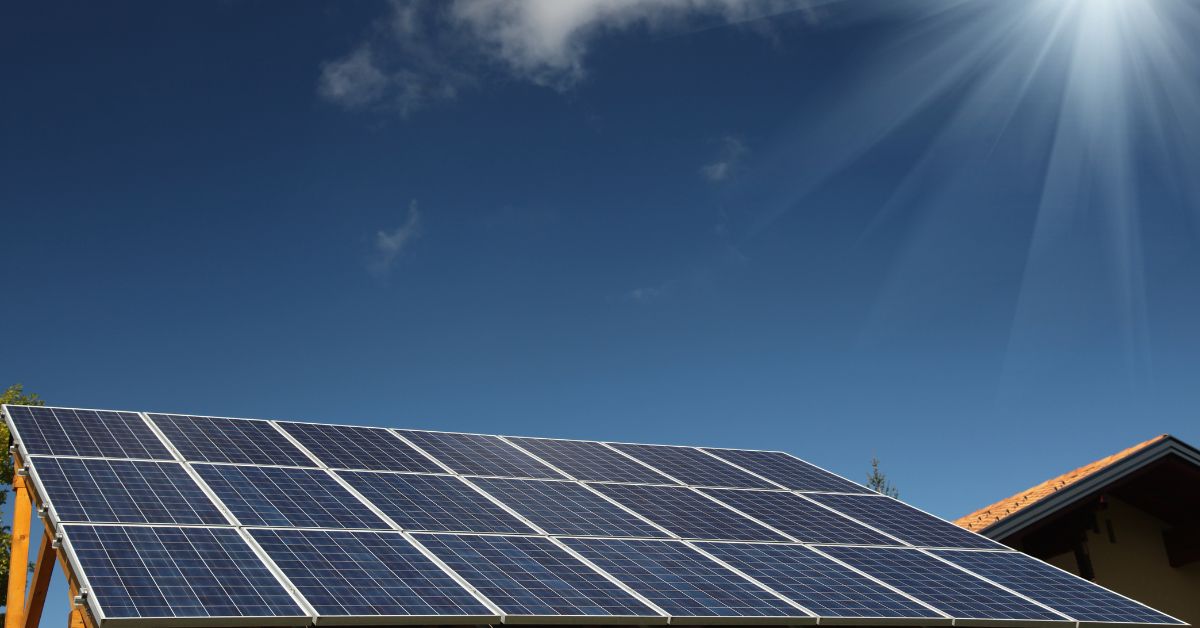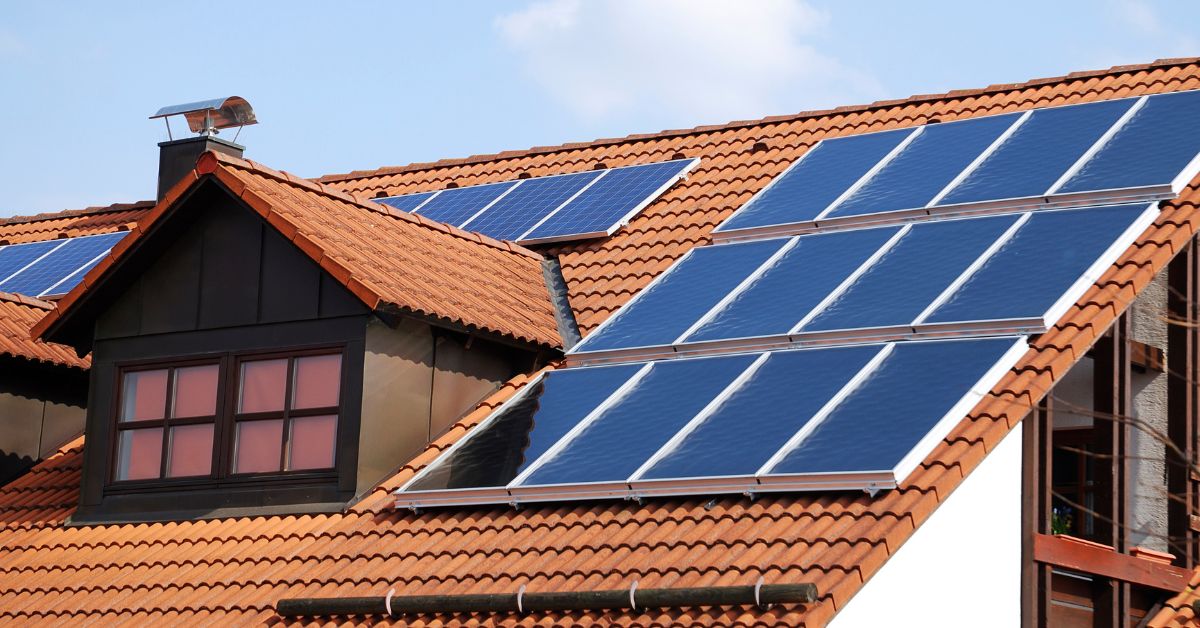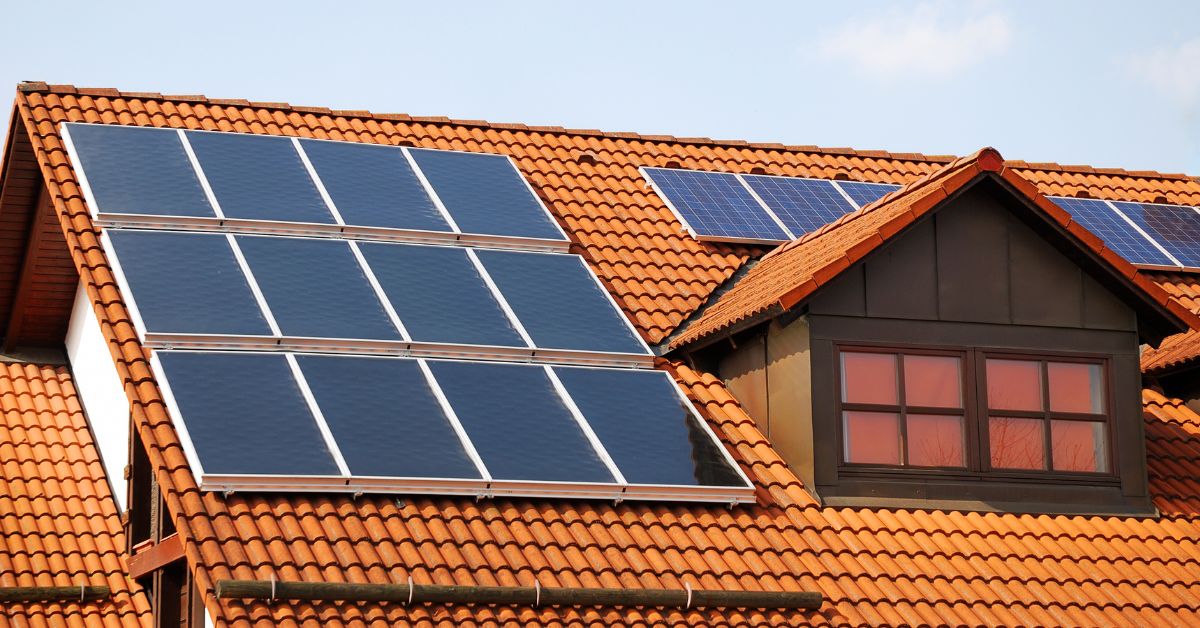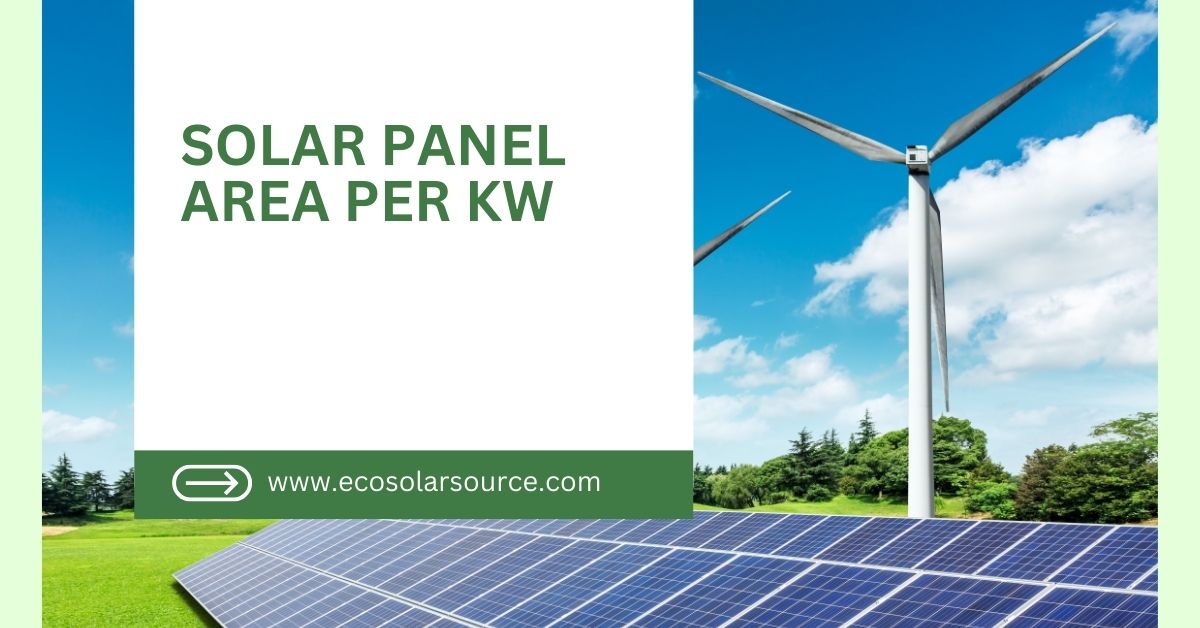Solar Panel Area Per KW
Solar panel area per kW refers to the physical space required to install photovoltaic (PV) panels capable of producing one kilowatt (kW) of electricity under optimal conditions. The exact area depends on panel efficiency, type, and tilt.
Typically, for standard silicon-based panels with around 15-20% efficiency, about 6 to 8 square meters (65 to 86 square feet) are needed to generate 1 kW. More efficient panels, like monocrystalline ones, require less space, while lower-efficiency types need more. Understanding this helps plan solar installations on rooftops or open land, optimizing energy output and space use.
Table of Contents
Solar Panel Area Per KW: A Comprehensive Guide
Solar energy has been a revolutionary solution in the push towards sustainable energy. Solar energy has emerged as a leading renewable resource as more individuals, businesses, and governments look to reduce their carbon footprints and lower energy costs. A key consideration when installing a solar panel system is the amount of space, or area, that is required to generate sufficient energy, typically measured in kilowatts (kW). Understanding how much space is needed per kilowatt of solar power can help in designing efficient systems for residential, commercial, or industrial applications.
This guide will explore in detail how to calculate the area required for a solar system that generates 1 KW of power, the factors influencing that calculation, and best practices for maximizing efficiency. We’ll also take a look at different types of solar panels and how they impact the space required.
Understanding Solar Panel Efficiency
Before diving into the specifics of how much area is needed for 1 KW of solar power, it’s important to understand the concept of solar panel efficiency. Solar panel efficiency refers to the percentage of sunlight that a solar panel can be convert into usable electricity. The higher the efficiency, the less space you need to generate a certain amount of power.

- Standard Solar Panel Efficiency: Most solar panels on the market today have an efficiency rating between 15% and 22%. This means that of the sunlight hitting the panel, 15% to 22% is converted into electricity, and the rest is lost as heat or reflected away.
- High-Efficiency Solar Panels: Newer, more advanced solar panels are pushing the boundaries of efficiency, with some models reaching efficiencies of up to 23% or higher. While these panels are more expensive, they require significantly less space to generate the same amount of power.
- Factors Affecting Solar Panel Efficiency:
- Material Quality: Panels made from higher-quality materials will generally be more efficient.
- Type of Solar Panel: There are different types of solar panels (monocrystalline, polycrystalline, and thin-film) that offer varying levels of efficiency.
- Location and Climate: Solar panels are more efficient in sunny locations and cooler temperatures, as excessive heat can reduce their performance.
- Tilt and Orientation: Solar panels that are tilted and oriented to capture the most sunlight will perform better, increasing overall efficiency.
Types of Solar Panels and Their Impact on Space Requirement
There are several types of solar panels available, each with its level of efficiency and space requirements.
1. Monocrystalline Solar Panels
Monocrystalline panels are the most efficient type of solar panel currently available, with efficiency ratings typically ranging from 18% to 22%. These panels are made from a single continuous crystal structure, which allows them to convert more sunlight into electricity compared to other types of solar panels. As a result, monocrystalline panels take up less space for the same power output, making them ideal for areas where space is limited.
For example, to generate 1 KW of power, monocrystalline panels typically require around 5 to 6 square meters (53 to 64 square feet) of space, depending on the specific panel’s efficiency and wattage.
2. Polycrystalline Solar Panels
Polycrystalline panels are slightly less efficient than monocrystalline panels, with efficiency ratings between 15% and 17%. These panels are made from multiple fragments of silicon crystals melted together, which makes them less expensive but also less efficient. Consequently, polycrystalline panels require more space to generate the same amount of electricity.
For polycrystalline panels, you may need around 6 to 8 square meters (64 to 86 square feet) of space to generate 1 KW of power.
3. Thin-Film Solar Panels
Thin-film solar panels are the least efficient type of solar panel, with efficiency ratings ranging from 10% to 12%. These panels are made by depositing a thin layer of photovoltaic material onto a substrate. Because they are less efficient, thin-film panels require more space to generate the same amount of power as monocrystalline or polycrystalline panels.
To generate 1 KW of power, thin-film panels might require anywhere from 8 to 10 square meters (86 to 108 square feet) of space, depending on the specific technology used.
Calculating Solar Panel Area Per KW
The total area required for a solar panel system to generate 1 KW of power is dependent on several factors, including:

- Solar Panel Efficiency: As mentioned earlier, higher-efficiency panels require less space, while lower-efficiency panels need more space to generate the same amount of power.
- Panel Wattage: Solar panels are typically rated in watts (W), with most residential panels ranging from 250 to 400 watts. The higher the wattage of the panel, the fewer panels are required to reach 1 KW, thus reducing the total area needed.
- Sunlight Availability (Irradiance): The amount of sunlight an area receives (measured in peak sun hours) can significantly impact the space required for solar panels. Locations with higher solar irradiance require fewer panels to generate the same amount of power.
To calculate the area required for a 1 KW system, use the following formula: Area per KW=1000Panel Efficiency×Sunlight Irradiance×System Losses\text{Area per KW} = \frac{1000}{\text{Panel Efficiency} \times \text{Sunlight Irradiance} \times \text{System Losses}}Area per KW=Panel Efficiency×Sunlight Irradiance×System Losses1000
Let’s break down the formula:
- 1000: This represents the number of watts in 1 kilowatt (1 KW = 1000 watts).
- Panel Efficiency: The efficiency of the solar panel is a decimal (e.g., 18% efficiency is 0.18).
- Sunlight Irradiance: This is the amount of sunlight that reaches the Earth’s surface, typically measured in kilowatt-hours per square meter per day (kWh/m²/day).
- System Losses: This accounts for inefficiencies in the system, including inverter losses, shading, and dirt on the panels. These losses are usually estimated to be around 10% to 15%.
Example Calculation
Let’s assume you have a location with 5 hours of peak sunlight per day, using monocrystalline solar panels with an efficiency of 18%, and accounting for 15% system losses. The area required per kilowatt (KW) can be calculated as follows:
- Convert efficiency to decimal: 18% = 0.18
- Adjust for system losses: 15% = 0.85 (so we’ll multiply by 0.85 to account for this)
- Use the formula:
Area per KW=10000.18×5×0.85\text{Area per KW} = \frac{1000}{0.18 \times 5 \times 0.85}Area per KW=0.18×5×0.851000 Area per KW≈10000.765≈6.54 square meters\text{Area per KW} \approx \frac{1000}{0.765} \approx 6.54 \, \text{square meters}Area per KW≈0.7651000≈6.54square meters
So, for a system with monocrystalline panels, 5 hours of peak sunlight, and 15% system losses, you would need approximately 6.54 square meters (70.4 square feet) of space to generate 1 KW of power.
Factors Influencing Solar Panel Area per KW
Several external factors can influence how much space is required per kilowatt of solar power:
1. Geographical Location
The location of the solar installation plays a significant role in determining the amount of space needed for 1 KW of solar power. Areas closer to the equator receive more sunlight throughout the year, allowing for more power generation in a smaller space. In contrast, locations with less sunlight, such as those farther from the equator or in consistently cloudy regions, will require more space to generate the same amount of power.
2. Shading
Shading from nearby trees, buildings, or other obstructions can reduce the efficiency of a solar panel system. If shading is an issue, more panels may be needed to compensate for the reduced performance, increasing the total area required.
3. Roof Type and Orientation
The type and orientation of the roof where the solar panels are installed can also impact the amount of space needed for a 1 KW system. Roofs that face south (in the northern hemisphere) or north (in the southern hemisphere) typically receive the most sunlight and are therefore ideal for solar installations. Roofs with other orientations may require more panels (and thus more space) to generate the same amount of power.
Additionally, roofs with steep slopes may not be able to accommodate as many panels as flat roofs, potentially increasing the space required.
4. Tilt Angle
The tilt angle of the solar panels affects how much sunlight they receive throughout the day. Panels that are tilted at an optimal angle for the location’s latitude will perform better than those that are installed at a suboptimal angle. If the panels are not tilted correctly, more panels may be needed to generate the same amount of power, increasing the required area.
How to Optimize Solar Panel Area for Maximum Efficiency
While the area required for a 1 KW system is largely dependent on factors such as panel efficiency and sunlight availability, several strategies can be used to optimize the space and maximize efficiency:

- Choose High-Efficiency Panels: Investing in high-efficiency monocrystalline panels can significantly reduce the space needed for your system. Although these panels are more expensive, the savings in space can be worth it, especially for installations with limited roof space.
- Optimize Panel Layout: Work with a professional solar installer to design a layout that maximizes the use of available space. This may involve adjusting the tilt angle, spacing panels more efficiently, or installing panels on multiple roof surfaces.
- Minimize Shading: Remove or trim any nearby trees that may cast shadows on your panels. If building structures are causing shading issues, consider installing panels on an alternative part of your property that receives more sunlight.
- Utilize Tracking Systems: Solar tracking systems can adjust the angle of the panels throughout the day to follow the sun’s path, allowing them to capture more sunlight and generate more power. While tracking systems are more expensive and require maintenance, they can reduce the total area needed for your solar system by increasing panel efficiency.
- Consider Ground-Mounted Systems: If you have limited roof space but plenty of land, a ground-mounted solar system can provide the flexibility needed to install a larger system. Ground-mounted systems also allow for optimal tilt and orientation adjustments.
FAQs About Solar Panel Area Per KW
Q1. How much area is required for 1 kW of solar panels?
Typically, 1 kW of solar panels requires about 6 to 8 square meters (65 to 86 square feet) of area, depending on the type of panel used and its efficiency.
Q2. Does panel efficiency affect the area required per kW?
Yes, the efficiency of solar panels significantly impacts the area required. High-efficiency panels need less space, while lower-efficiency panels require more area to produce the same 1 kW of power.
Q3. How does the type of solar panel affect the area per kW?
There are different different types of solar panels, such as a monocrystalline, polycrystalline, and thin-film. Monocrystalline panels are the most efficient and thus require less space, while thin-film panels are less efficient and require more area.
Q4. Do geographical location and sunlight affect the area needed for 1 kW?
While the physical space requirement per kW is fixed by panel size and efficiency, more space may be needed in areas with less sunlight, as additional panels would be required to compensate for lower energy production.
Q5. How many panels are required for 1 kW of solar power, and how much area do they cover?
Typically, you need about 3 to 4 solar panels rated at around 300 to 350 watts each to produce 1 kW of power. The total area covered by these panels would be around 6 to 8 square meters.
Q6. Can I reduce the space required for 1 kW by using tracking systems?
Solar tracking systems can increase the efficiency of power generation by following the sun, but they do not directly reduce the area required for 1 kW of installed capacity. However, fewer panels might be needed for the same energy output.
Q7. How does shading impact the area needed per kW?
Shading can reduce the energy output of a solar panel system, which may lead to the need for more panels and thus more area to generate the same 1 kW of power. Proper positioning is key to minimizing shading effects.
Q8. Is roof space usually enough for a 1 kW solar installation?
For most residential homes, roof space is generally sufficient for a 1 kW installation, as it only requires 6 to 8 square meters. However, factors like roof shape, orientation, and shading need to be considered.
Q9. How does panel orientation affect the area required per kW?
Optimal orientation (typically south-facing in the Northern Hemisphere) ensures maximum efficiency. Poor orientation may require more panels and area to generate the same 1 kW of energy.
Q10. Can I use smaller panels to reduce the area needed for 1 kW?
While smaller panels are available, they generally have lower wattage and efficiency, which may require more of them and thus increase the total area needed to generate 1 kW.
Calculating the solar panel area per kilowatt is an essential step in planning a solar installation, whether for residential or commercial purposes. The space required for a 1 KW system depends on several factors, including the efficiency of the panels, the geographic location, shading, roof orientation, and tilt angle.
For monocrystalline panels, you can expect to need around 5 to 6 square meters for each kilowatt, while polycrystalline and thin-film panels may require significantly more space. Understanding these factors and working with a professional installer can help you design an efficient solar system that maximizes power generation while minimizing the space required.
By choosing high-efficiency panels, optimizing the panel layout, and minimizing shading, you can reduce the area needed for your solar installation and make the most of the available space. Whether you’re installing a small residential system or a large commercial solar farm, calculating the area per KW is a key step in making the most of solar energy.

